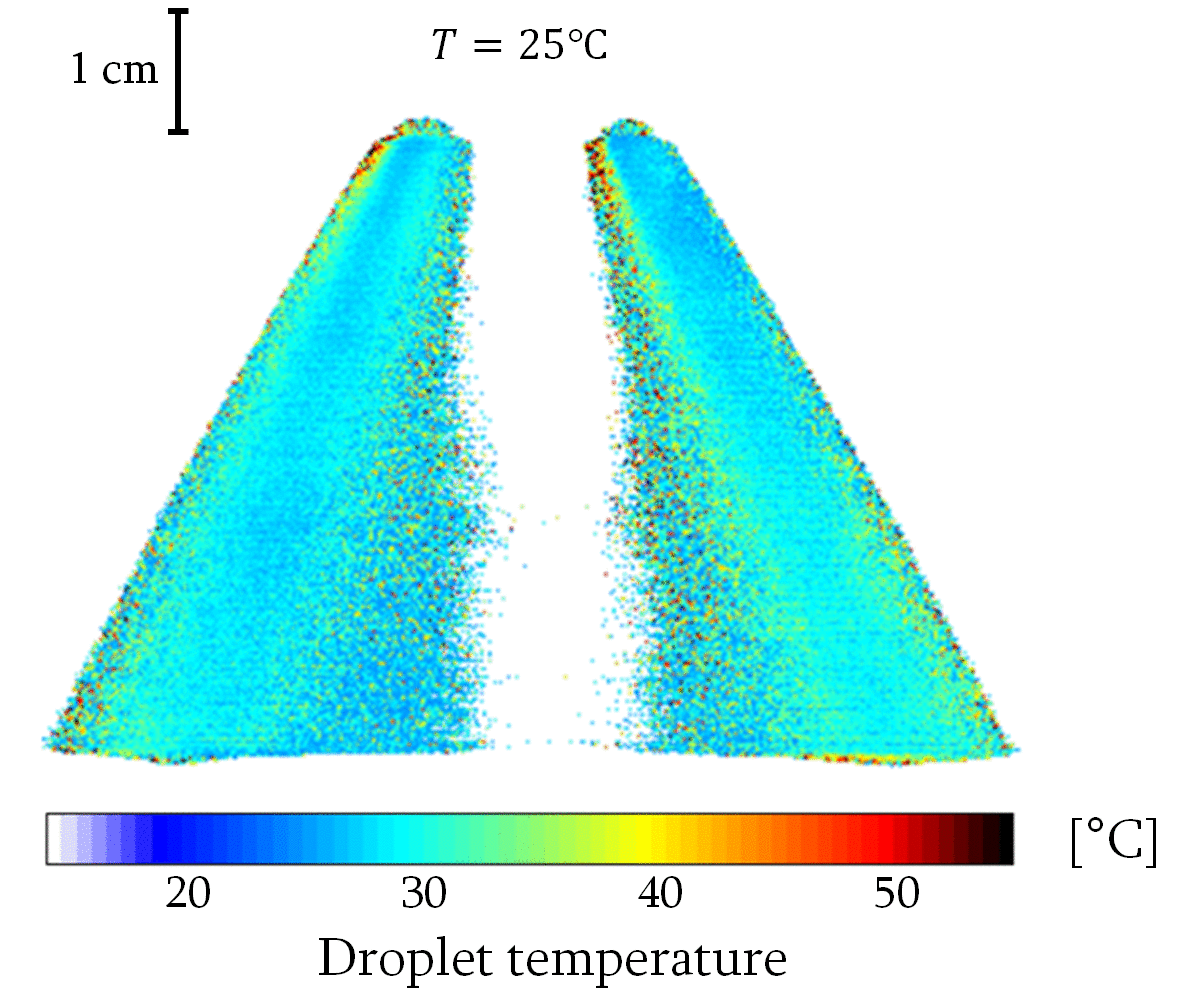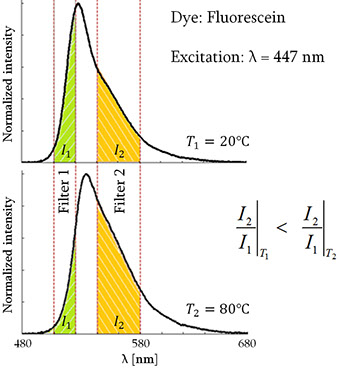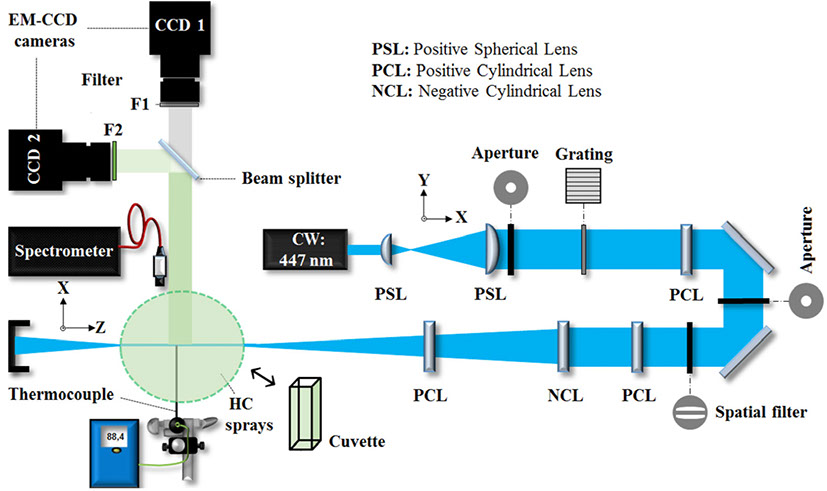
2D averaged temperature mapping:
Certain fluorescing dyes are known to display spectral variations in their LIF emission depending on their temperature – a phenomenon the two-color LIF ratio technique exploits for thermometry. The technique is based on recording the LIF emission within two suitable spectral bands, using bandpass filters and to calculate the temperature sensitive intensity ratio between these signal components. One experimental challenge associated with the technique concerns background contributions, which may stem from multiply scattered light, indirect reflections or other undesired out-of-focus light. Therefore, since two different spectral bands are studied, the background contribution (BG) in each LIF signal will, unavoidably, be different. This difference will consequently influence value of the intensity ratio R which is extracted in order to evaluate the temperature, according to:
By not correcting for the effects introduced by multiple light scattering the resulting ratio can be strongly influenced. Applying SLIPI provides means to distinguish between signal components and background interferences and to suppress the later. In addition to this sensitivity improvement, the suppression of the unwanted light contribution allows obtaining sharper temperature gradients.



H. Grosshans, E. Kristensson, R.-Z. Szasz and E. Berrocal, Prediction and Measurement of the local extinction coefficient in sprays for 3D simulation/experiment data comparison, International Journal of Multiphase Flow, 72, 218–232, 2015.
